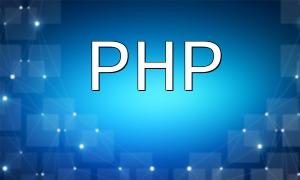PHP, as a popular programming language, is widely used in web development. In PHP low-level development, database connection and query optimization play a crucial role in improving system performance and response speed. This article will explore database connection principles and query optimization techniques in PHP low-level development.
Database connection is an essential part of web applications. Typically, PHP connects to databases through database extension modules. PHP provides a variety of extension modules, such as MySQL, SQLite, and PostgreSQL, and developers can choose the appropriate module based on their needs. Understanding the principles of database connection and how to optimize them is vital in low-level development.
First, the principle of database connection is data transmission via underlying protocols. Different databases use different protocols, with common ones including TCP/IP and UNIX domain protocols. PHP uses these protocols to establish a connection with the database, transmit, and receive data.
Since database connections are resource-intensive, optimizing them is crucial. Common connection optimization strategies include connection pooling, persistent connections, and load balancing. Connection pooling involves creating multiple database connection instances at the application's startup and storing them in the pool. When database operations are required, connections are fetched from the pool, avoiding the overhead of repeatedly creating and destroying connections, thereby improving performance and response speed.
Persistent connections, on the other hand, do not close immediately after a script finishes execution but remain in the pool for use by the next script, eliminating the need to establish and authenticate connections with each script execution. Load balancing distributes database connections across multiple servers to avoid single points of failure and improve system fault tolerance and scalability.
Database queries are one of the most common operations in web applications, so optimizing query performance is critical to improving system efficiency.
First, it's essential to avoid frequent database queries. Caching techniques like Memcached or Redis can store query results, preventing direct database access on each request and significantly improving system response time.
Second, proper use of indexes can greatly enhance query speed. Indexes are one of the most effective tools for database optimization and can significantly accelerate queries. When designing a database, it’s essential to choose index fields based on actual business needs and regularly perform database optimization and index rebuilding.
Additionally, avoiding full-table scans is an important query optimization strategy. Full-table scans refer to queries that lack indexing or filtering, requiring the entire table to be scanned, which consumes significant resources. When designing queries, adding WHERE conditions or using JOIN operations can help limit the data being queried, thereby improving efficiency.
Finally, query performance analysis and optimization are crucial to improving query efficiency. Using the EXPLAIN keyword allows developers to examine the execution plan of queries, identify potential performance bottlenecks, and optimize accordingly. Further optimization can be achieved by adjusting database configuration files and improving the query syntax.
In conclusion, database connection and query optimization in PHP low-level development are key factors in improving web application performance. By understanding database connection principles, utilizing techniques like connection pooling, persistent connections, and load balancing, as well as implementing indexing, avoiding full-table scans, and performing query performance analysis, developers can significantly enhance system responsiveness and stability. Mastering these optimization techniques is essential for building efficient and stable web applications.









